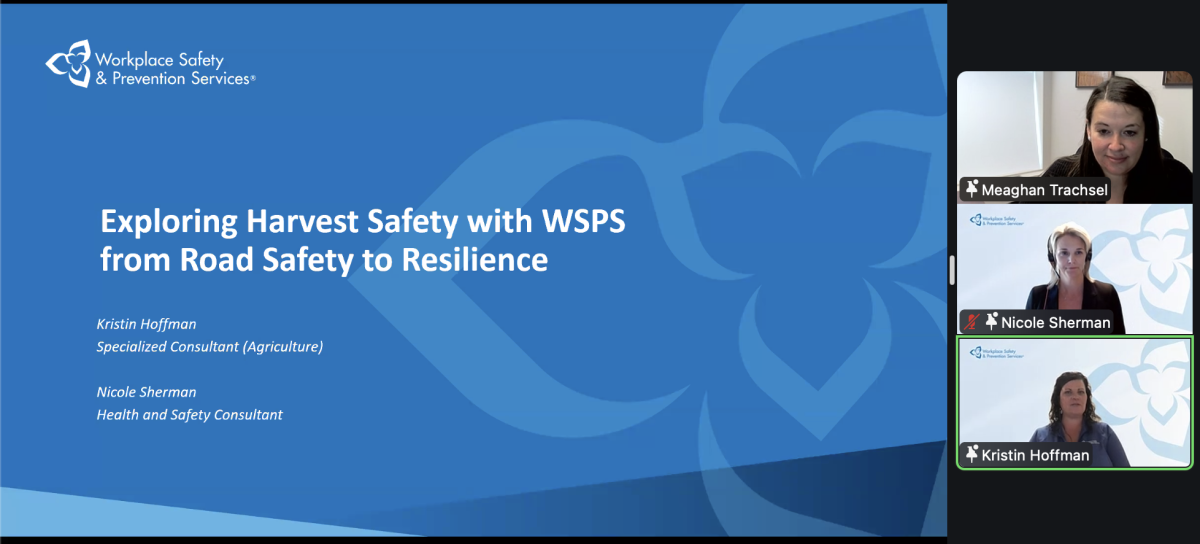Canadian farmers’ realized net farm income dropped again in 2006 to its lowest level since 2003, Statistics Canada reported Monday.
The federal statistician cited rising interest, wage and fuel costs along with declines in hog prices and program payments, which more than offset revenues from crops and cattle.
The agency painted the dismal net income picture on the same day as it released data on nationwide farm cash receipts for the first three quarters of 2007. Receipts were buoyed to a record high by revenue from crops, which bit into the bottom line for livestock producers although their receipts also rose.
Read Also

Exploring Harvest Safety
Kristin Hoffman of WSPS explains measures for increased farm safety around harvest season
Net income ’06
Realized net income, the difference between cash receipts and operating expenses minus depreciation and plus income-in-kind, dropped to $844 million nationwide in 2006, down from $1.7 billion in 2005 and below the five-year (2001-05) average. Saskatchewan and New Brunswick were the only provinces where farmers’ realized net income rose in 2006.
Total net income, which is realized net income plus the value of inventory change, dropped to negative $6 million in 2006 from positive $2.3 billion in 2005.
Cash receipts rose 1.9 per cent to $32.4 billion in 2006, with crop revenues up 7.9 per cent to $14.5 billion while livestock revenues fell 2.5 per cent, mostly due to hog prices. Receipts in the supply-managed sectors (dairy, eggs, poultry) dropped 0.8 per cent, mostly on a 4.3 per cent drop in chicken receipts. Program payments dropped 8.1 per cent year-over-year to $4.5 billion, mostly on the end of programs such as FIPP and BSE-related payments, as well as a 21.1 per cent drop in crop insurance payments.
Operating expenses, meanwhile, were up 3.5 per cent to $31.6 billion, including interest, debt costs, fuel bills and hired labour. Manitoba’s expenses, in particular, rose 6.8 per cent as farmers who couldn’t seed into wet conditions in 2005 returned to the fields in 2006. The value of inventories fell $849 million, mostly as on-farm stocks of canola and durum went to market and stocks of feed grains dropped.
Farm cash receipts ’07
Canadian farmers took in a record $26.7 billion in market revenue from January through September 2007, up 13.7 per cent from the year-earlier period and 16.1 per cent above the five-year (2002-06) average, during which time crop prices dropped and BSE cut off Canada’s cattle and beef export markets.
Crop receipts were up 25.6 per cent to $12.9 billion for the first nine months of 2007 over the same period in 2006, while cattle and hog exports to the U.S. plus higher chicken and dairy prices boosted livestock receipts 4.4 per cent to $13.8 billion. Program payments dropped 15.4 per cent to $3 billion compared to the year-earlier period.
Cash receipts rose particularly in Manitoba by 23.3 per cent to $3.25 billion, again due mostly to favourable crop conditions in 2006 driving returns higher compared to 2005. Revenues were flat in Nova Scotia and B.C. and down in New Brunswick and Prince Edward Island.
Wheat and soybean receipts rose substantially compared to 2006, while potato receipts fell 9.5 per cent on lower prices and canola deliveries were down slightly.
While down this fall, average cattle and hog prices were slightly up in the first three quarters of 2007 over those from the year-earlier period, due to increased exports. Supply-managed commodity revenues were also up during the period.
Program payments dropped mostly due to lower payments from the Grain and Oilseeds Payment program (GOPP), which paid out just $6 million as it wound down, compared to $730 million in the first three quarters of 2006. Better growing conditions reduced crop insurance payments and cheques from programs related to CAIS remained “relatively stable.”














